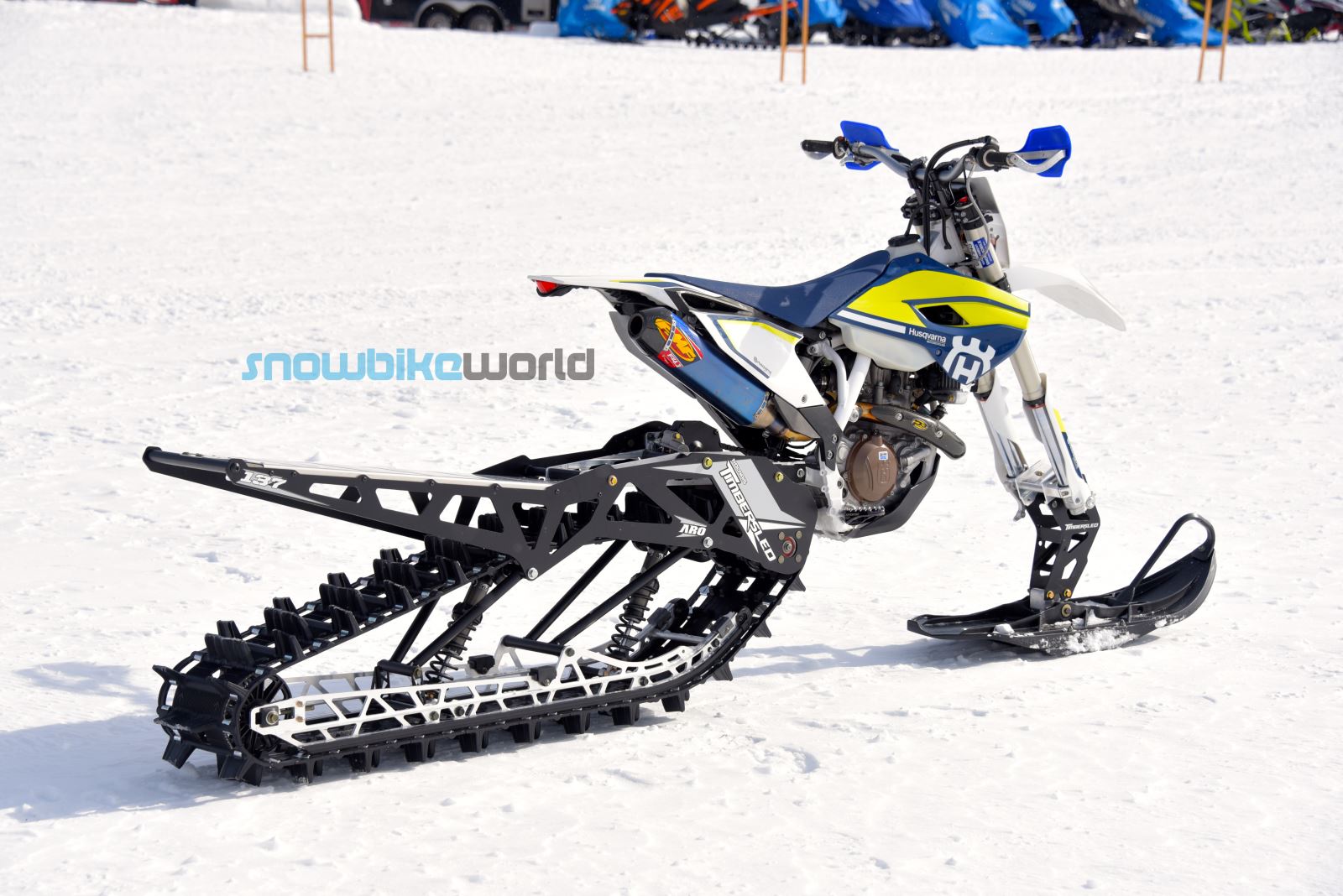
Big news for Timbersled for 2018. This will have snowbikers across the globe excited.
The 2018 Timbersled ARO (pronounced "arrow") is all-new from the ground up, and from the ski loop to the track lugs. The only carry-over parts from previous generations are the drive chain (which is now longer) and the TSS shock (although the ball mounts are new).
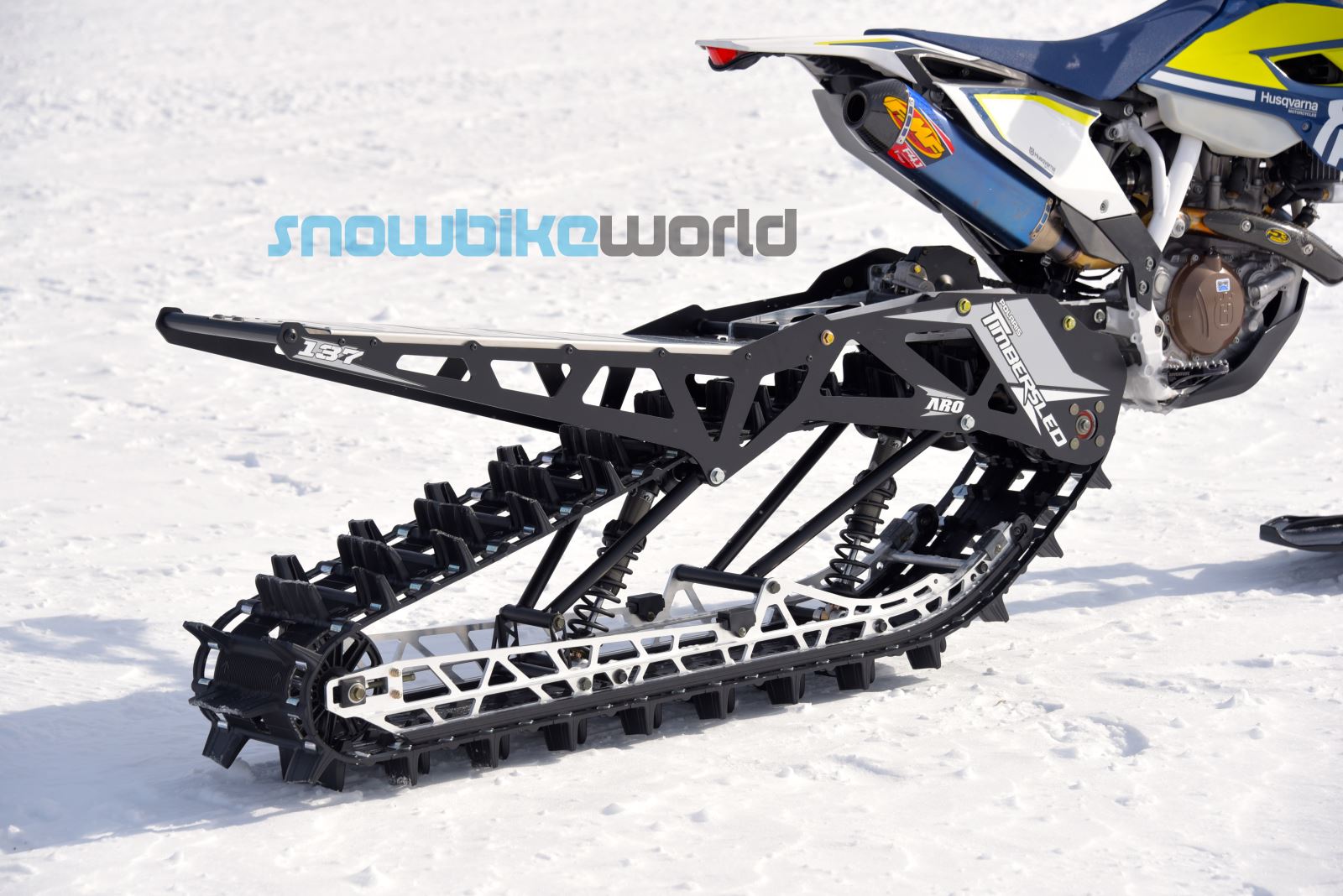
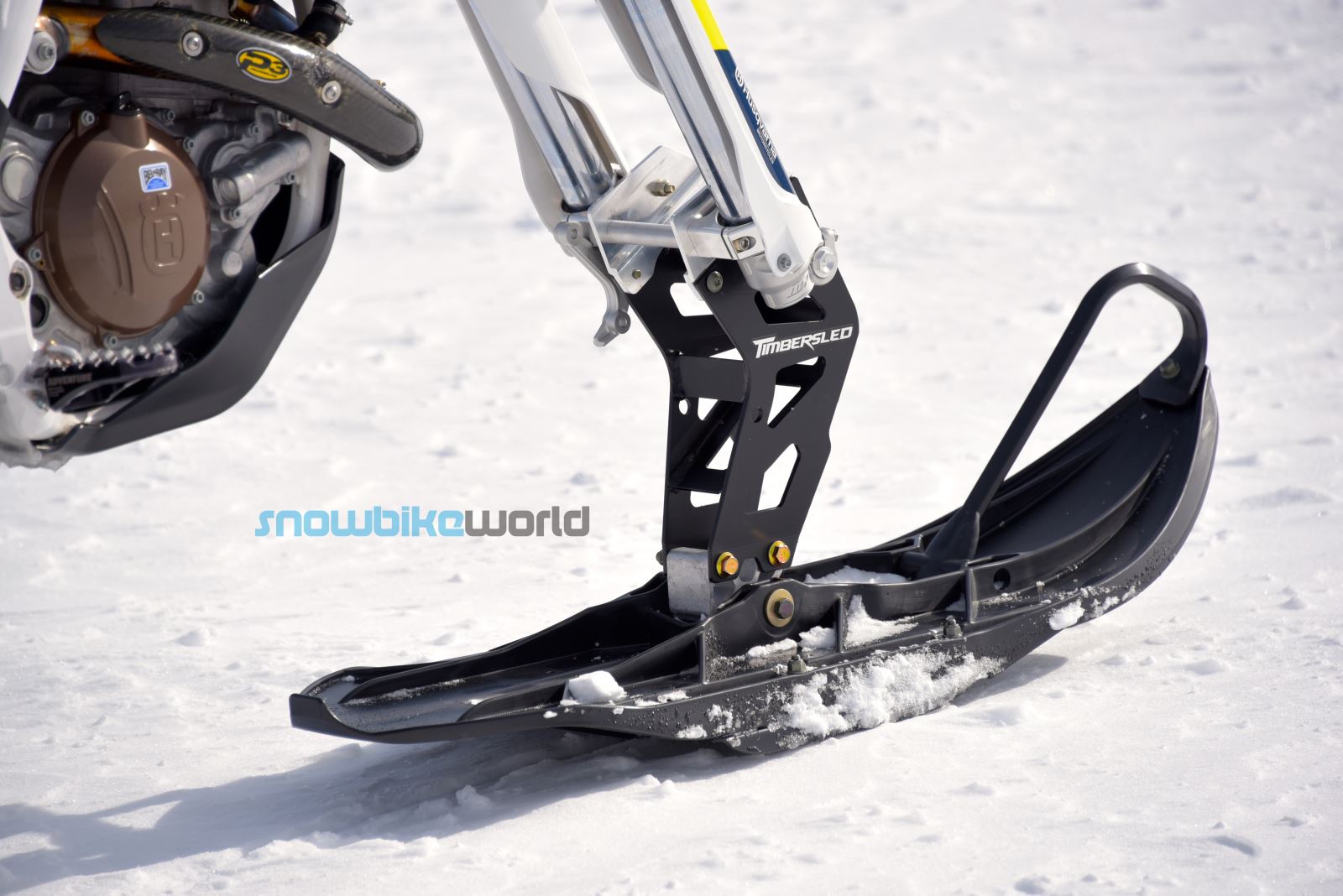
WHAT'S NEW ON THE 2018 TIMBERSLED ARO:
- 11-pound weight reduction.
- New 1:1 ski-to-track width design.
- New 11.5-inch wide track (1 inch narrower than before).
- Convex track lug shape with new 22-percent-wider center lugs.
- Optimized window placement to privide more lift and traction.
- Track is 13 percent lighter than previous design.
- New 11.5-inch wide tri-keel Traverse ski (same width as track).
- Center keel is deeper and has improved transition between keel and center skag.
- Embedded center skag.
- Outer keels have single blade runners.
- New RMK ski loop.
- New spindle with mounting holes from the factory.
- New ARO extruded aluminum chassis that is 10 pounds lighter than old design.
- New forged pivot point.
- Pivot bushings are pre-installed in forging.
- New side structure design.
- New tunnel design with integrated fuel storage rack.
- New drive chain cover with 2-inch deeper heel pocket.
- New chain idler system that allows for more gearing changes on the bike.
- New simplified chain adjustment design.
- New shielded ARO brake system design.
- New factory-bled Magura brake system with Magura master cylinder and lever.
- New taller gearing in drive case.
- Increased chassis durability.
- New ARO rear suspension.
- New RMK-inspired rails.
- Longer shock travel by 33 percent.
INITIAL RIDE IMPRESSIONS
We spent some time on the 2018 Timbersled ARO in late February. Our ride consisted of everything from bumpy snowmobile trails, moguled-out single track, deep fresh powder, heavy set untracked snow, wind-blown ridges, crusty snow and long tree-littered caynons.
We rode the ARO on a 2016 Husqvarna FE501.
The first thing we noticed was the narrow feel of the new chassis. As soon as you hop on the ARO, you get a slim feel. Your heels don't kick out like the old design. In fact, we could get away with running stock footpegs on bikes without a problem.
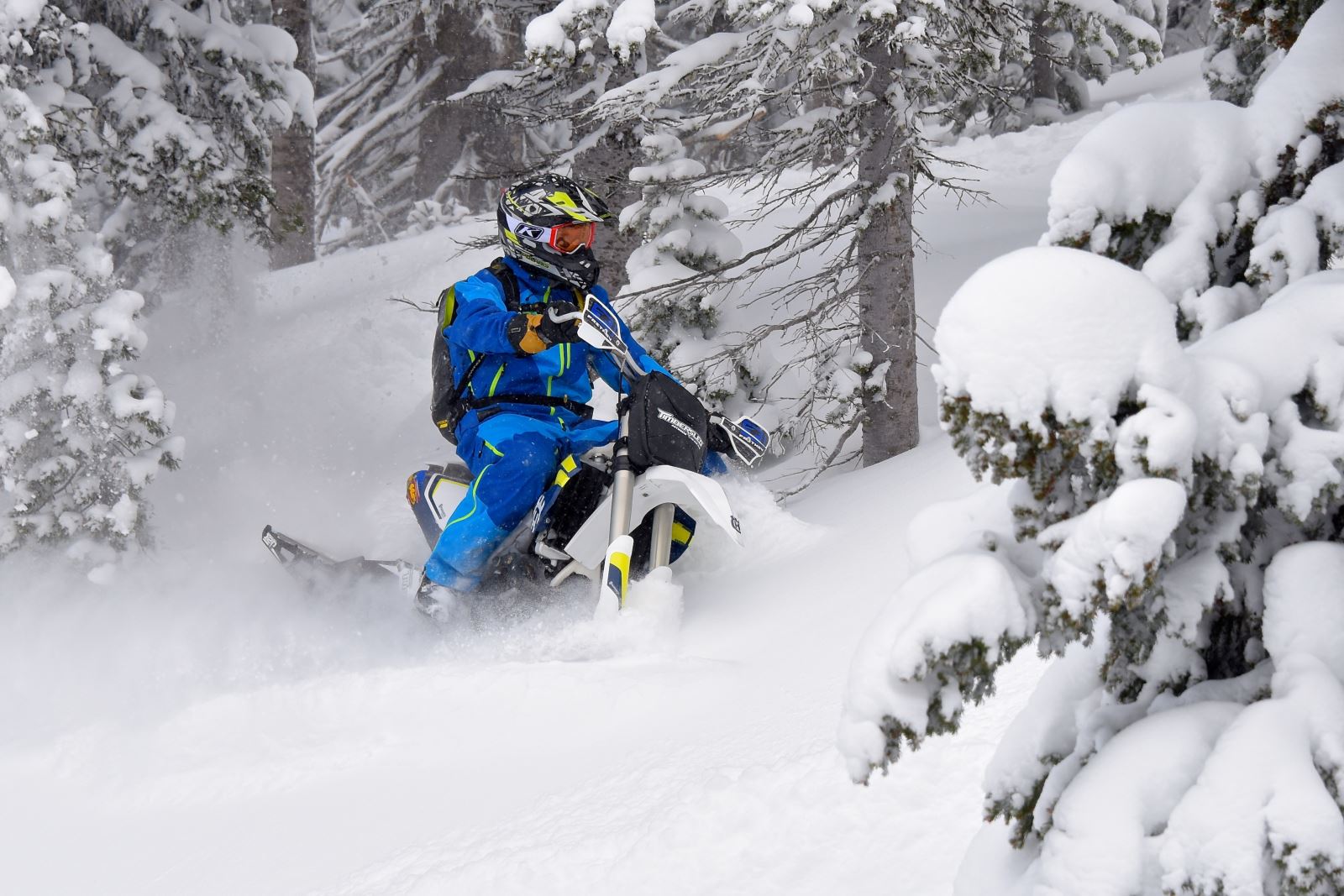
The next thing that hit us once we hit a steep hillside covered in old-growth trees was how balanced the new system feels. The old Timbersleds (pre-2015) felt like the track was designed from leftover snowmobile rear suspension parts, and the front spindle and ski were an afterthought. The handling improved with 2016 and 2017 refinements, but the entire system never felt like a complete, well-balanced package. Don't get us wrong––it felt great and performed very well. The last two years' Timbersleds have been our favorite systems because of how well they get on top of the snow and drive the bike forward, and the plush suspension feel. But it wasn't until we rode the 2018 ARO that we completely realized how unbalanced those earlier generations were.
You could easily say that the ARO reperesents Polaris' influence on Timbersled. The vast resources at Timbersled's disposal, including engineering personel, extrusion processes, and decades of studying suspension and track behavior in varying snow conditions. On top of that, the ARO has an improved fit and finish. The system seems a little more well-built and refined. This also can be attributed to the Polaris relationship, although the individuals at Timbersled did most of the engineering and and R&D on the ARO system with input from the guys who have designed the RMKs for the past decade.
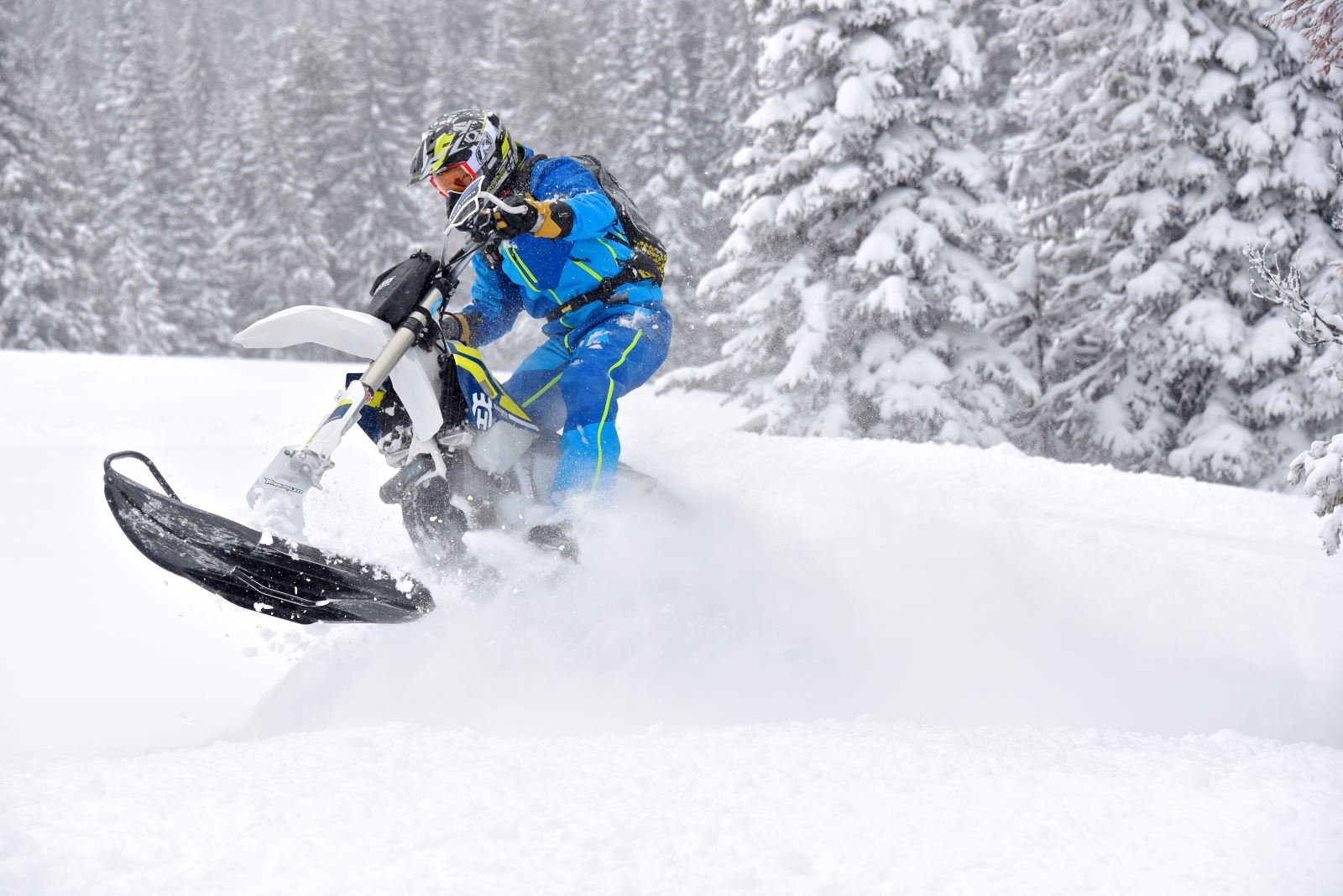
In the mountains (in a real-world riding scenario, not out in a field half a mile from the semi truck), we rode the 2018 ARO like we stole it. The new matched ski and track widths make a pretty significant difference on how the bike tracks across a sidehill line. The track isn't running through a narrow ski trench, catching edges of a wall everywhere it goes. Where sometimes the track and ski used to fight like siblings sharing a cramped room, the ARO tracks and flows like a dirt bike with two well-thought-out tires would.
The improved efficiency of the kit also sticks out. It seems to jump on top of the snow better than ever when you take off from a dead stop. That's a trait we're familar wtih on the Axys RMK, so definately some RMK heritage at play there. The taller gearing is a plus, because now that the track is driving on the snow more than through the snow, the engine can do more with a given RPM. So taller gears let it run without feeling like the engine can't pull it.
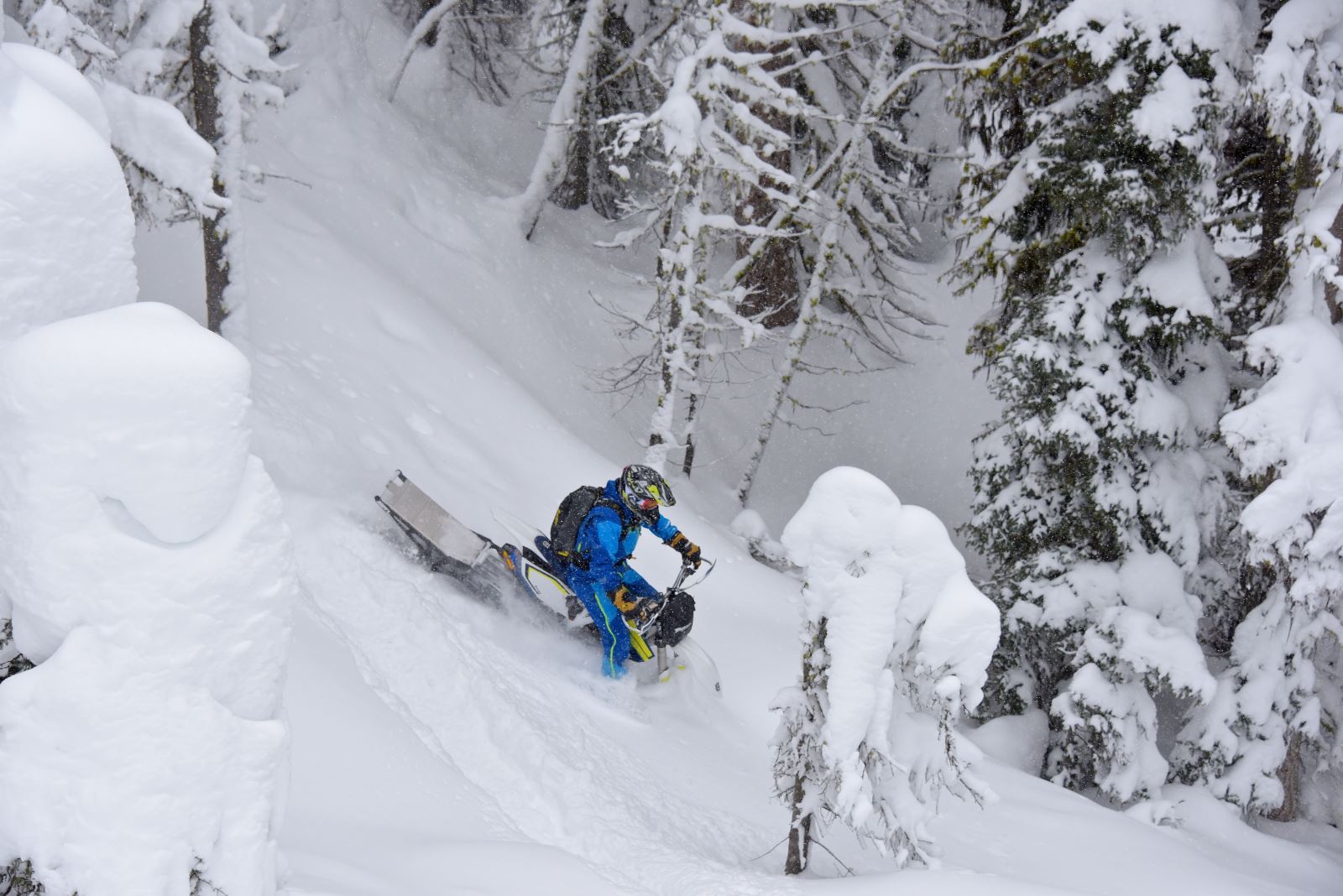
The ski is an excellent step forward, especially on any kind of packed surface. You know how everybody describes how a snowbike handles on a trail? They hold their hand vertical and start shaking it violently like an epileptic seizure. That's the typical "snowbike twitch" description. With the ARO, that may not be entirely gone––but it's reduced to an almost unoticeable degree. We've always been able to ride our Timbersleds on packed trails as fast as the bike would go and only wreck once every now and then. On the ARO, we could not only grab gears and rail corners on trails, we can stand up and pound moguls like a whoop section and dice around holes without worrying about getting tossed unexpectedly. We know this sport and technology is only going to progess, but we are impressed with how much better the ARO's handling is over last year.
2018 TIMBERSLED MODELS
ST 120 Raw –– This model remains unchanged from 2017
ARO 120 –– Fox Zero Pro shocks
ARO 137 –– Fox Zero Pro shocks
ARO 120 LE –– Fox QS3 shocks and custom colors
ARO 137 LE –– Fox QS3 shocks and custom colors
Ripper –– for 110cc bikes